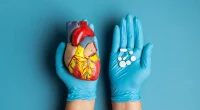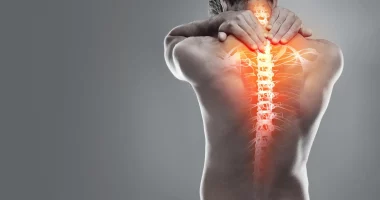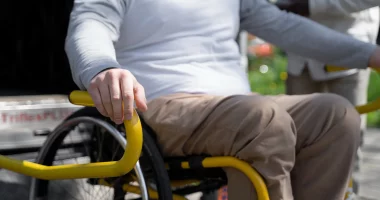Cardiomyopathy is a condition where the heart muscle becomes weak. This weakness makes it hard to pump blood from the heart effectively to the rest of the body.
The Centers for Disease Control and Prevention estimates that about 1 in 500 individuals might have cardiomyopathy. However, many people with this condition don’t realize they have it. Cardiomyopathy can develop gradually over time, or some people may be born with it.
Symptoms
In some episodes, especially when the condition is mild, a person with cardiomyopathy might not notice any symptoms. This means they might feel perfectly fine and not know they have the condition. However, as cardiomyopathy gets worse, different symptoms can start to appear.
Individuals with more advanced cardiomyopathy may experience several symptoms. They might feel unusually tired all the time, have trouble breathing, or notice that their legs and ankles are swollen. Other signs include feeling the heart beating irregularly or very fast, experiencing dizziness, or even fainting. These symptoms can vary in how severe they are from person to person.
Causes and Risk Factors
The exact cause of cardiomyopathy is often unclear, but several known risk factors can increase the likelihood of developing the condition. Factors that lead to inflammation or damage to the heart can heighten this risk. For instance, heart failure, which can arise from a heart attack or other heart-related issues, may contribute to cardiomyopathy.
Several additional risk factors include a family history of sudden cardiac death, heart disease, or cardiomyopathy itself. Other contributing factors are hypertension, coronary artery disease, and conditions like sarcoidosis and amyloidosis that can destroy the heart. Viral infections, alcohol use disorder, diabetes, pregnancy, and the use of amphetamines and cocaine are also associated with a higher risk. Additionally, chemotherapy and obesity have been linked to an increased risk of cardiomyopathy.
Types
Cardiomyopathy can be classified into several types, each with distinct characteristics.
Dilated Cardiomyopathy is the most common type and typically affects adults under 50 years old. It often begins in the left ventricle, which may later involve the right ventricle as well. Over time, dilated cardiomyopathy can also impact the atria, and the heart’s upper chambers, altering their function and structure.
Hypertrophic Cardiomyopathy is a hereditary condition where abnormal growth occurs in the muscle fibers of the heart, leading to thickening of these fibers. This thickening makes the heart’s chambers stiffer, which can impede blood flow and increase the risk of arrhythmias, or irregular heartbeats. It is the second most common form of cardiomyopathy in children, with diagnosis often occurring before the age of one in about one-third of cases.
Restrictive Cardiomyopathy happens when the tissues of the heart’s ventricles become rigid, preventing them from filling with blood properly. This rigidity can eventually cause heart failure. This type is more common in older adults and may outcome from infiltrative conditions, like amyloidosis, where abnormal substances accumulate in the body’s tissues.
Arrhythmogenic Cardiomyopathy involves the replacement of healthy heart tissue in the ventricle on the right with fibrotic and fatty tissue, leading to irregular heart rhythms. In some cases, this can also affect the left ventricle. This kind of cardiomyopathy increases the chance of sudden cardiac death, particularly among young athletes and people, and is a hereditary condition.
Diagnosis
To diagnose cardiomyopathy, healthcare providers will first perform a physical examination and then use various diagnostic tests to confirm the condition.
One common test is a chest X-ray, which helps determine if the heart is enlarged—a potential indicator of certain health issues. An electrocardiogram measures the heart’s electrical activity, including its rhythm and rate, to identify any irregularities.
An echocardiogram uses sound waves to produce a moving picture of the heart, allowing doctors to assess its size, shape, structure, and function. Cardiac catheterization is another procedure where a cardiologist evaluates the blood flow through the arteries in the heart.
A cardiac MRI is a noninvasive test that employs radiofrequency and magnetic field waves to create detailed pictures of the heart. Lastly, genetic testing, or genomic testing, can be used to identify or eliminate genetic disorders like cardiomyopathy.
Treatment
The goal of treating cardiomyopathy is to manage symptoms, moderate the disease’s progression, and prevent unexpected cardiac death. The approach to treatment often depends on the seriousness of the symptoms and the specific type of cardiomyopathy.
Lifestyle Changes
Lifestyle Changes are a fundamental part of managing cardiomyopathy. Adopting a balanced diet that limits saturated fats, trans fats, added salt, and sugars can help alleviate conditions that contribute to cardiomyopathy and potentially slow its progression. In addition to dietary changes, quitting smoking, managing stress, and staying fit is advantageous. The amount and intensity of exercise should be tailored to individual needs, and it is crucial to consult a healthcare professional before starting any new exercise program.
Medications
Medications are commonly used in treating cardiomyopathy. Depending on the patient’s condition, healthcare providers may prescribe various drugs, such as:
- Beta-blockers, which slow the heartbeat and reduce the heart’s workload.
- Blood thinners, which decrease the chance of blood clots.
- Diuretics, which help rule out excess fluid from the body that can build up when the heart is not pumping effectively.
- Blood pressure medications, including ACE inhibitors, angiotensin receptor-neprilysin inhibitors, and angiotensin receptor blockers which assist in lowering blood pressure and decreasing stress on the heart.
- Antiarrhythmics, which prevent unusual rhythms of the heart.
Implanted Devices
Implanted Devices may also be used as part of the treatment plan, depending on the symptoms:
Pacemakers are battery-powered devices placed under the skin close to the collarbone. They regulate the heart’s rhythm by delivering electrical impulses. Some pacemakers are leadless, meaning they do not require leads to be inserted into the heart.
Implantable Cardioverter-Defibrillators are similar to pacemakers but can deliver an electrical shock to correct dangerous heart rhythms. In some cases, patients may need Cardiac Resynchronization Therapy, which involves an additional lead to help the heart beat more synchronously.
Left Ventricular Assist Devices help pump blood throughout the body when the heart is seriously weakened. This device can be crucial for patients who are awaiting a heart transplant.
Surgery
Surgery might be considered for severe cases. Surgical options include:
Septal Myectomy, which is performed for hypertrophic cardiomyopathy. This procedure removes part of the thickened septum obstructing blood flow from the left ventricle, improving the heart’s blood flow.
Heart Transplantation may be an option for individuals with advanced heart failure due to certain types of cardiomyopathy. It is a complex procedure and not everyone is eligible.
When to Contact a Healthcare provider
Cardiomyopathy is a serious medical condition that needs proper treatment. If left untreated, the disease can advance and become dangerous.
It is important to see a healthcare provider if you have a strong family history of cardiomyopathy or if you experience any of its symptoms. Getting an early diagnosis can significantly improve the chances of managing the condition effectively and enhancing the overall outlook.
Summary
Cardiomyopathy is a serious condition where the heart muscle weakens, making it difficult for the heart to pump blood effectively. There are several types, including dilated, hypertrophic, restrictive, and arrhythmogenic cardiomyopathy, each with different characteristics and risk factors.
Treatment involves lifestyle changes, medications, implanted devices, and sometimes surgery, depending on the severity and type of cardiomyopathy. Early diagnosis and treatment are crucial to manage symptoms and prevent complications. Anyone with a family history of the condition or symptoms should consult a doctor to improve their outlook.









